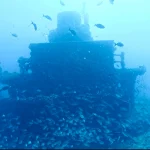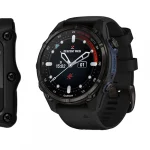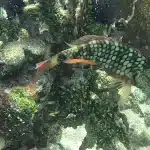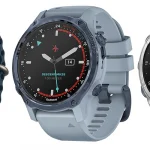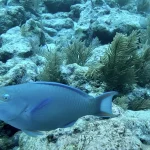Table of Contents
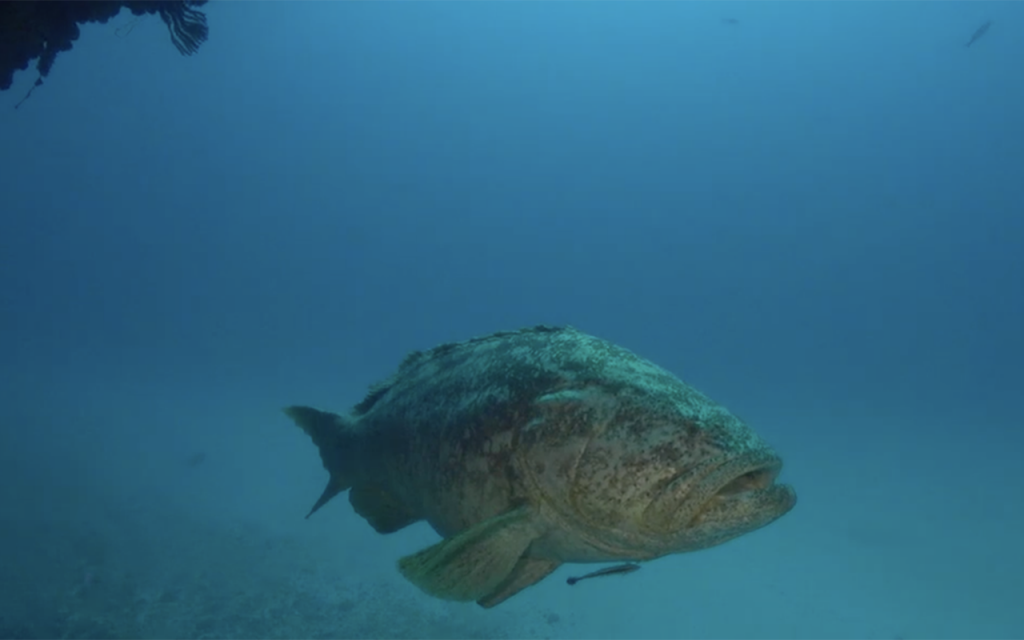
While the Doc DeMilly shares some characteristics with other Florida shipwrecks, its unique history, challenging dive conditions, and vibrant marine life set it apart as a distinctive diving experience.
Article at a Glance
- Location Coordinates: The Doc DeMilly shipwreck is located at approximately 25.36780° N latitude and 80.13105° W longitude, lying about half a mile east of Pacific Reef.
- Depth: The wreck rests at a depth of approximately 140 feet (43 meters), making it suitable for advanced and technical divers.
- Historical Significance: Originally a refrigerated freighter, the Doc DeMilly was intentionally sunk in 1986 as part of an artificial reef program, enhancing local marine ecosystems.
- Unique Dive Experience: The wreck features an intact structure with significant marine life, including goliath groupers and various shark species, providing an exciting diving environment.
- Safety Measures: Divers are encouraged to have advanced training due to strong currents and depth. Guided dives and thorough pre-dive briefings are recommended for safety.
- Dive Shops in Miami: Several local dive shops offer trips to the Doc DeMilly, including:
- Scuba Miami
- South Beach Divers
- Miami Dive Company
- Aqua Adventures
- Rainbow Reef Dive Center
- Planning Your Dive: It’s advisable to contact dive shops directly for availability, equipment rentals, and trip schedules to ensure a safe and enjoyable diving experience at the Doc DeMilly.
Shipwreck Location Coordinates and Depth
Depth
Approximate Depth: 140 feet (43 meters)
Location Coordinates
The Doc DeMilly shipwreck is located at the following coordinates:
- Latitude: 25.36780° N
- Longitude: 80.13105° W
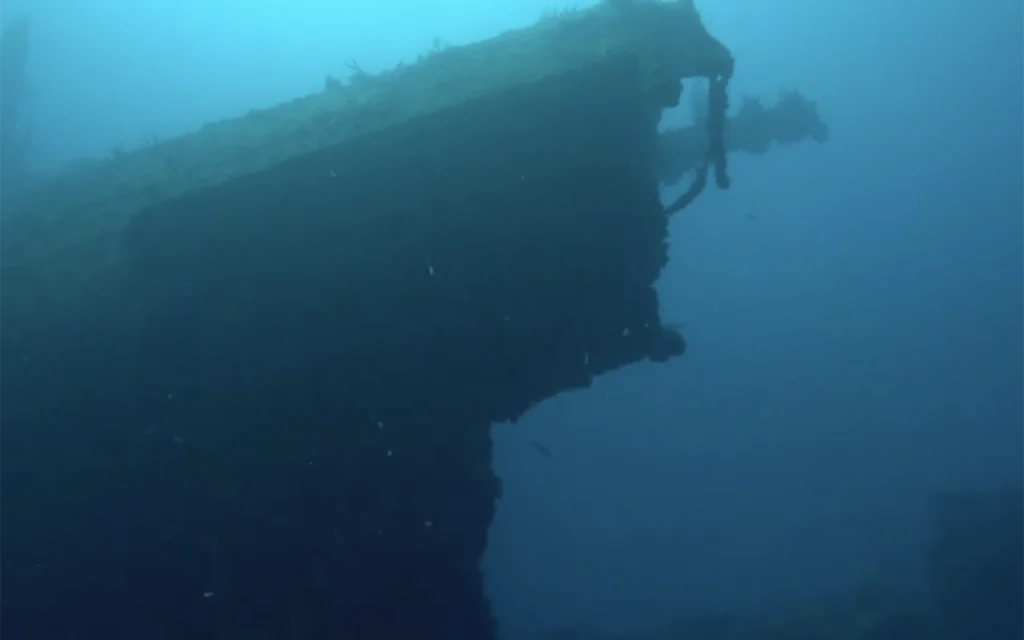
What Do Scuba Divers Say About This Ship
General Impressions
- Diving Experience: Divers describe the experience of exploring the wreck as thrilling, with the ship lying upright and intact at a maximum depth of approximately 140 to 145 feet. The wreck is known for its significant marine life, making it a vibrant dive site.
- Marine Life: The Doc DeMilly is home to a diverse array of marine species, which divers find appealing. The structure of the wreck provides habitats for various fish and other sea creatures, enhancing the underwater experience.
Conditions and Challenges
- Current and Visibility: The site is noted for having strong currents, which can pose challenges for divers. Good buoyancy control and experience are recommended for those diving here.
- Wreck Condition: After being subjected to storms and time, parts of the wreck, especially the bow and stern superstructures, have deteriorated, limiting penetration options. Divers often report that while the wreck is interesting, it requires caution due to its condition.
Historical Context
- Sinking Details: The ship was sunk in 1986 after being bombed as part of a controlled sinking operation. This history adds an intriguing layer to the dive, as divers can appreciate not only the marine life but also the story behind the wreck.
What Kind of Marine Life Can Be Found on The Ship
- Goliath Groupers: These large fish are often spotted around the wreck, attracting divers due to their impressive size and unique appearance.
- Sharks: Several species of sharks frequent the area, adding an element of excitement to dives. Common sightings include reef sharks and occasionally larger species.
- Barracudas: These predatory fish are commonly found in the waters around the wreck, often seen in schools.
Key Information
| Key Information | Details |
|---|---|
| Wreck Name | Doc DeMilly |
| Location | Approximately 0.5 miles east of Pacific Reef, South Florida |
| Coordinates | 25.36780° N, 80.13105° W |
| Depth | 140 feet (43 meters) |
| Type of Vessel | Refrigerated freighter |
| Year Sunk | 1986 |
| Sinking Method | Intentionally sunk using explosives by U.S. Air Force F-4D Phantoms |
| Marine Life | Goliath groupers, barracudas, various sharks |
| Dive Experience Level | Recommended for advanced and technical divers |
| Nearby Dive Shops | Various local dive shops offer trips, including Scuba Miami, South Beach Divers, and others |
What Makes The Doc DeMilly a Unique Diving Experience
Historical Significance
- Controlled Sinking: The ship was intentionally sunk in 1986 as part of an artificial reef program, providing divers with a site that has both historical and ecological importance.
Dive Characteristics
- Depth Range: The wreck lies at depths between 70 and 140 feet, making it suitable for advanced and technical divers. This depth range allows for exploration of different sections of the wreck, providing varied dive experiences.
- Intact Structure: The wreck is largely intact, allowing divers to explore its features and structure. This provides opportunities for both recreational and technical diving, including penetration dives for experienced divers.
Marine Life
- Biodiversity: The Doc DeMilly serves as an artificial reef, attracting a wide variety of marine life. Divers can encounter species such as goliath groupers, barracudas, and various sharks, enhancing the underwater experience.
Environmental Factors
- Strong Currents: The area is known for its strong currents, which can challenge divers and add an element of excitement to the dive. Divers often need to exercise good buoyancy control and experience to navigate safely.
Accessibility
- Diverse Dive Site: The wreck is part of a larger dive site that includes multiple wrecks and artificial reefs in the vicinity, allowing divers to explore several sites in one outing. This diversity makes it a popular destination for dive charters.
How Does The Doc DeMilly Compare to Other Shipwrecks in Florida
Historical Context
- Intentional Sinking: The Doc DeMilly was sunk in 1986 as part of an artificial reef program, using explosives to create a diving site. This contrasts with many other wrecks that may have sunk due to accidents or natural causes, giving the Doc DeMilly a unique backstory that divers find intriguing.
Dive Characteristics
- Depth and Structure: The wreck is located at depths ranging from 70 to 140 feet, making it suitable for advanced divers. It is largely intact but has suffered structural damage from storms, limiting penetration options. This is similar to other wrecks like the DEMA Trader, which also offers penetration opportunities but is noted for its more intact structure and easier access for divers.
- Current Conditions: The Doc DeMilly is known for strong currents, which can present challenges. In comparison, other wrecks like the Rio Miami are more sheltered and offer easier diving conditions, making them accessible to a broader range of divers.
Marine Life
- Biodiversity: The Doc DeMilly is home to a diverse array of marine life, including goliath groupers and various shark species. While many Florida wrecks attract marine life, the Doc DeMilly’s artificial reef status and the surrounding currents contribute to a particularly vibrant ecosystem, akin to other popular sites like the Deep Freeze, which is also rich in marine biodiversity but offers different dive experiences.
Accessibility and Popularity
- Proximity to Other Wrecks: The Doc DeMilly is located near other popular dive sites, allowing divers to explore multiple wrecks in one outing. This is a common feature of many Florida dive locations, but the combination of its unique history, challenging conditions, and rich marine life makes it particularly appealing to experienced divers looking for adventure.
What is The Full History of This Ship
Early Years
- Launch and Early Use: The ship, originally named Domburgh, was launched in August 1949 by Werfde Noord N.V. in the Netherlands as a refrigerated freighter. Over the years, it underwent modifications, including a hull lengthening in 1962, and was renamed several times, eventually becoming the Nuevo Rio in 1982.
Renaming and Sinking
- Tribute to a Local Figure: The vessel was renamed the Doc DeMilly in honor of John DeMilly Jr., a beloved veterinarian who was murdered in October 1985. This renaming added a personal touch to the ship’s legacy, connecting it to the local community.
- Sinking as an Artificial Reef: On March 6, 1986, the Doc DeMilly was intentionally sunk approximately half a mile east of Pacific Reef. The sinking involved a dramatic process where the ship was bombed with concrete-filled bombs dropped by U.S. Air Force F-4D Phantoms, alongside explosives rigged by the Dade County Metro Bomb Squad. The ship ultimately sank stern-first, coming to rest upright in about 145 feet of water.
Post-Sinking Condition
- Environmental Impact: Following its sinking, the Doc DeMilly became an artificial reef, attracting a variety of marine life. However, it has faced challenges due to storms and time, leading to significant structural damage, particularly to its bow and stern superstructures, which now limit penetration options for divers.
Cultural Significance
- Part of a Larger Reef Initiative: The sinking of the Doc DeMilly was part of a broader trend in South Florida during the 1980s, where several vessels were intentionally sunk to create artificial reefs. This initiative aimed to enhance local marine ecosystems and provide recreational diving opportunities.
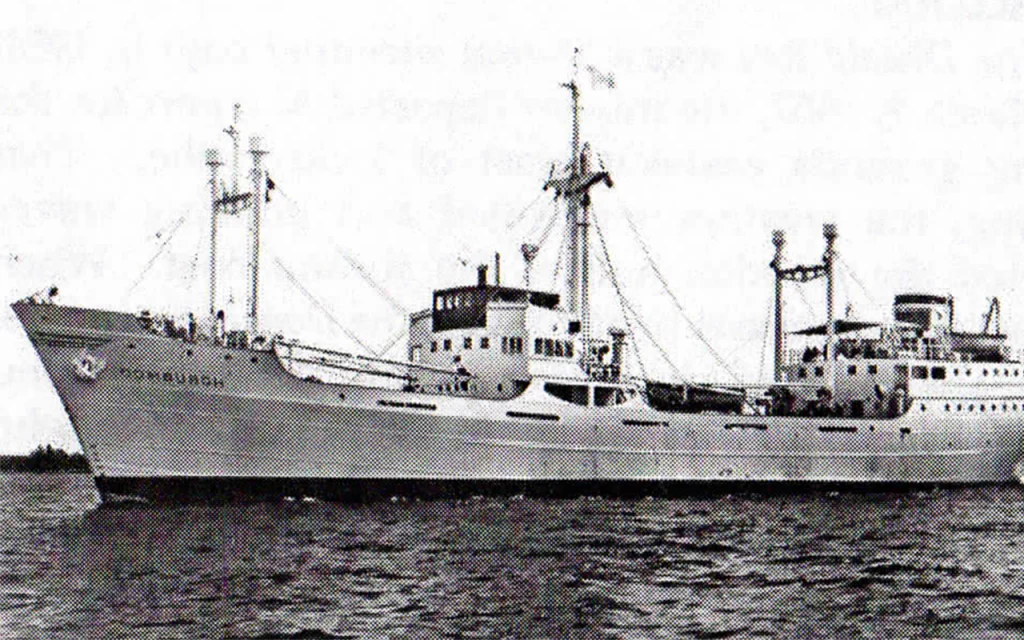
What Historical Features Can Still Be Identified on The Doc DeMilly Wreck
- Original Structure: The Doc DeMilly was originally a refrigerated freighter, measuring 287 feet in length. Its design and construction as a working vessel can still be appreciated in the remnants of its steel hull and superstructure, despite significant deterioration over time.
- Sinking Method: The ship was sunk using a dramatic method involving concrete-filled bombs dropped by U.S. Air Force F-4D Phantoms, along with explosives rigged by the Dade County Metro Bomb Squad. The remnants of this explosive history contribute to the wreck’s unique story and are a point of interest for divers.
- Condition of the Wreck: The wreck currently lies upright in approximately 145 feet of water, but it has suffered damage from storms, particularly Hurricane Andrew, which separated a section of the stern from the hull. The bow and stern superstructures are now torn, limiting penetration options for divers and showcasing the effects of natural forces on artificial reefs.
- Cultural Significance: Named in honor of John DeMilly Jr., a local veterinarian who was murdered, the ship carries a personal connection to the community. This renaming adds a layer of cultural significance that divers often find meaningful.
- Artificial Reef Impact: As an artificial reef, the Doc DeMilly has become a habitat for diverse marine life, contributing to the ecological landscape of the area. The ship’s transformation from a freighter to a reef highlights the dual role of such structures in both recreation and marine conservation.
What Safety Measures Are in Place for Divers Visiting The Doc DeMilly
- Skill Level Recommendations: The dive site is recommended for advanced and technical divers due to its depth (70 to 140 feet) and the presence of strong currents. Divers should have appropriate training and experience before attempting to dive here.
- Guided Dives: Many dive operators offer guided dives to the Doc DeMilly, which can enhance safety by providing experienced dive leaders who are familiar with the site and can assist with navigation and emergency situations.
- Pre-Dive Briefing: Divers are typically given a thorough briefing before the dive, covering site conditions, potential hazards, and marine life to expect. This briefing helps divers prepare mentally and physically for the dive.
- Equipment Checks: Divers are encouraged to perform thorough equipment checks before entering the water. This includes checking tanks, regulators, and buoyancy control devices to ensure everything is functioning properly.
- Buddy System: As with all scuba diving, the buddy system is emphasized. Divers should always dive with a partner to enhance safety and provide assistance in case of emergencies.
- Emergency Procedures: Divers are advised to be familiar with emergency procedures, including how to handle potential issues such as equipment failure or strong currents. Having a dive knife is recommended for cutting away any entanglements, especially in areas with monofilament lines.
- Depth Awareness: Divers should monitor their depth and time to avoid decompression sickness. The depth range of the Doc DeMilly requires careful attention to dive tables or dive computers.
- Post-Dive Safety: After the dive, divers are encouraged to ascend slowly and perform safety stops to minimize the risk of decompression sickness.
Dive Shops That Prove Diving Trips to This Shipwreck
- Scuba Miami
- Offers a variety of dive trips, including wreck dives.
- Website: Scuba Miami
- South Beach Divers
- Provides guided dives to various wrecks, including the Doc DeMilly.
- Website: South Beach Divers
- Miami Dive Company
- Specializes in wreck diving and organizes trips to the Doc DeMilly.
- Website: Miami Dive Company
- Aqua Adventures
- Offers a range of diving experiences, including trips to local wrecks.
- Website: Aqua Adventures
- Rainbow Reef Dive Center
- Known for its wreck diving trips, including the Doc DeMilly.
- Website: Rainbow Reef Dive Center

